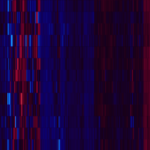Link to Pubmed [PMID] – 32174902
Link to HAL – sorbonne-universite-02552383
Link to DOI – 10.3389/fmicb.2020.00306
Front Microbiol 2020 ; 11(): 306
The commensal gut microbiome is contained by the enteric epithelial barrier, but little is known about the degree of specificity of host immune barrier interactions for particular bacterial taxa. Here, we show that depletion of leucine-rich repeat immune factor APL1 in the Asian malaria mosquito Anopheles stephensi is associated with higher midgut abundance of just the family Enterobacteraceae, and not generalized dysbiosis of the microbiome. The effect is explained by the response of a narrow clade containing two main taxa related to Klebsiella and Cedecea. Analysis of field samples indicate that these two taxa are recurrent members of the wild Anopheles microbiome. Triangulation using sequence and functional data incriminated relatives of C. neteri and Cedecea NFIX57 as candidates for the Cedecea component, and K. michiganensis, K. oxytoca, and K.sp. LTGPAF-6F as candidates for the Klebsiella component. APL1 presence is associated with host ability to specifically constrain the abundance of a narrow microbiome clade of the Enterobacteraceae, and the immune factor may promote homeostasis of this clade in the enteric microbiome for host benefit.





